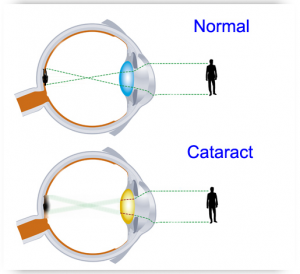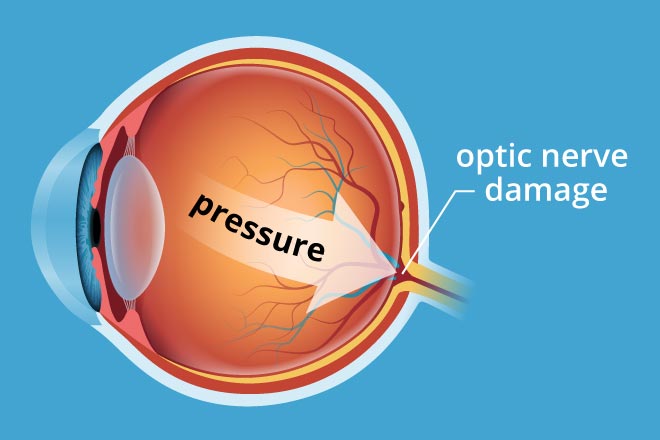Cataracts are hard to see through because they cause clouding of the lens within the eye. Cataracts most often affect both eyes and cause glare sensitivity and blurred vision.
A cataract is a normal part of aging. As we age, the normally clear crystalline lens within our eye can become yellow or opaque. Clinically significant cataracts occur when the patient is bothered by glare or blurred vision.

Most cataracts are caused by age and progress slowly. The following risk factors can increase the chance or progression of cataracts:
1. Accumulated exposure to ultraviolet radiation
2. Trauma
3. Some diseases of the eye
4. Some medications
5. Systemic diseases such as diabetes
6. Poor nutrition
In the early stages, your optometrist will monitor your cataract(s). Often your vision can be improved by making a change in your eyeglass prescription. However, if the cataract progresses and causes your vision to become too blurry, a referral to an ophthalmologist for cataract surgery will be arranged by your optometrist. To slow down the formation of cataracts, we recommend protection from the sun and a balanced diet.
Regular eye examinations by the optometrist to check the health of your eyes

Glaucoma is one of the most common causes of irreversible blindness in the world. It frequently occurs when fluid in the eye is unable to drain and the amount of pressure in the eyeball itself is increased beyond what is normal, resulting in irreversible nerve damage. The most common types of glaucoma are acute angle-closure, where the angle between the iris and cornea closes and prevents proper drainage of eye fluid, and open-angle, where the eye’s drainage canals become clogged over time and pressure builds. Recognizing the symptoms of acute angle-closure and open-angle glaucoma, as well as understanding your risk factors, can help ensure that you get proper treatment and avoid further damage to your eyes that may result in blindness.
As your nerves become increasingly more damaged, blind spots will develop in your field of vision. Blind spots are exactly what they sound like: areas in your vision where you are unable to see things. Eventually, the nerve damage becomes so severe that you lose your vision entirely. If you notice any blind spots, talk to your doctor immediately.

Topazeyeclinic © 2025 All Right Reserved